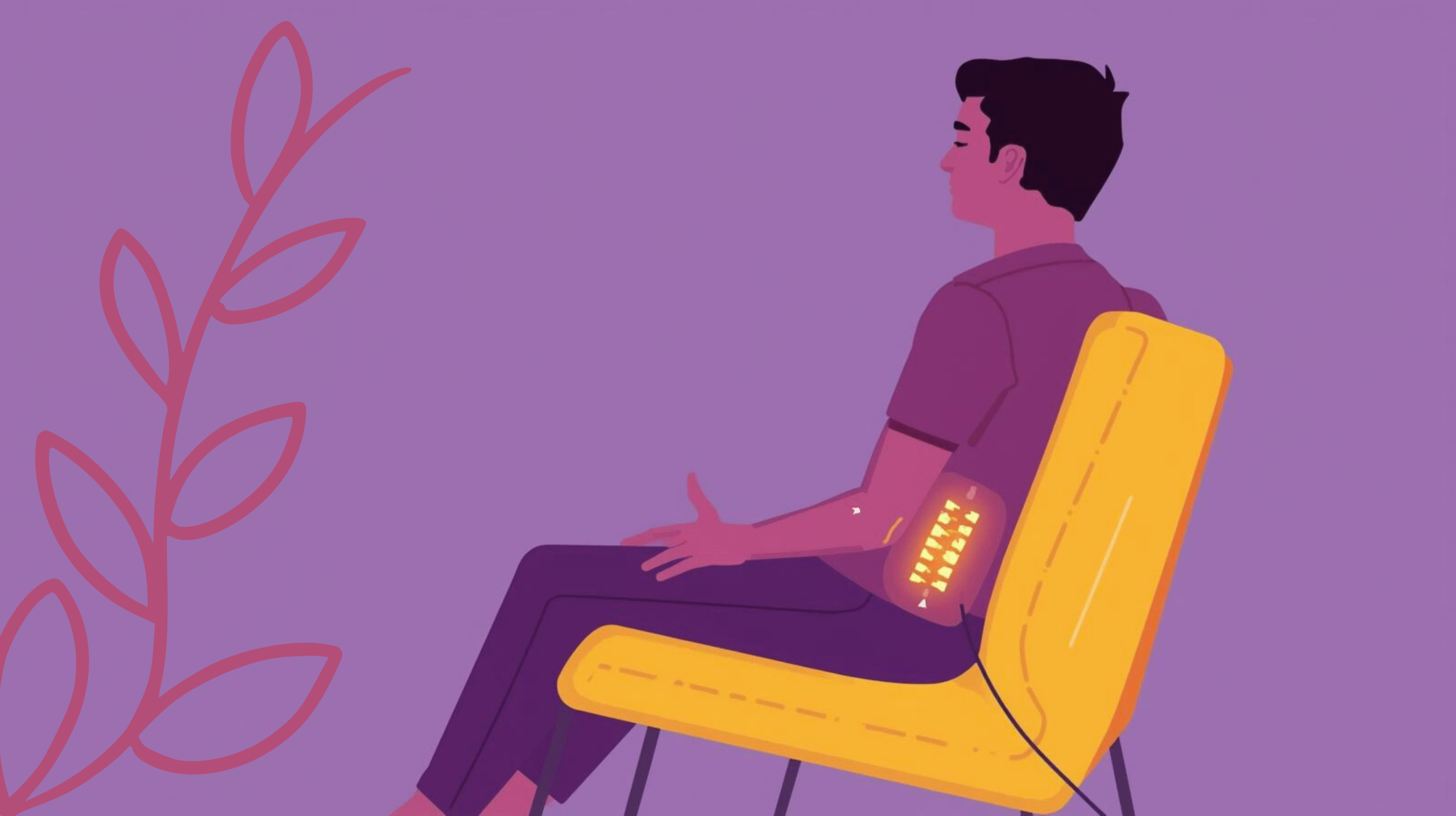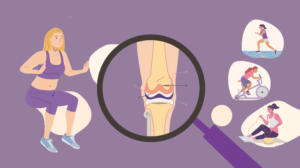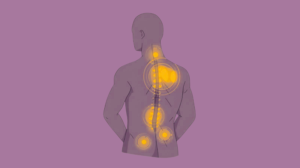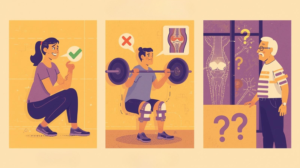Lower back pain is one of the most prevalent musculoskeletal issues in the modern world, affecting millions globally. It impacts people from desk-bound office workers to physically active individuals, making it a universal concern. The pain often stems from a combination of lifestyle habits such as prolonged sitting, repetitive strain, and inadequate posture, as well as from medical causes like arthritis or disc degeneration.
Many people attempt to treat lower back pain using either heat therapy to relax the muscles or lumbar support to maintain proper spinal alignment. While both are effective in isolation, combining them can yield significantly better results. Heat therapy works by relaxing tight muscles, improving blood circulation, and easing stiffness, whereas lumbar support maintains the natural curvature of the spine, prevents excessive strain on the lower back, and supports correct posture throughout daily activities. This article will explain the science behind each method, why their combined use offers superior relief, and how you can integrate them into your everyday routine to achieve both immediate comfort and long-term back health.
Understanding Lower Back Pain
- The lumbar spine forms the lower section of the backbone and is responsible for carrying much of the body’s weight. It also provides flexibility for bending, twisting, and other movements. Because it bears such a heavy load, the lumbar region is vulnerable to injury and strain.
- Pain in this area can result when muscles, ligaments, discs, or nerves become irritated or damaged. This could be due to a sudden incident, such as lifting something heavy with poor form, or a slow build-up of stress from daily activities, particularly prolonged sitting.
- Common causes include:
- Prolonged sitting without adequate lower back support, which increases pressure on spinal discs and weakens postural muscles over time.
- Heavy lifting without proper technique, which can strain muscles and damage ligaments.
- Muscle fatigue from awkward sleeping positions or repetitive bending
- Degenerative changes, such as arthritis or herniated discs, which reduce the spine’s ability to absorb shock.
- Lower back pain is classified as acute when it lasts for a few days or weeks and chronic when it persists for more than three months. Acute pain often responds well to early interventions like heat therapy, while chronic cases require a combination of ongoing strategies, including posture support and regular movement.
- Since back pain often involves both muscular and structural components, it is most effectively managed with methods that address both, which is why heat therapy and lumbar support complement each other so well.
Heat Therapy for Lower Back Pain
- Heat therapy works primarily by dilating the blood vessels in the affected area. This increase in blood flow brings more oxygen and nutrients to injured tissues while helping to flush away metabolic waste, which reduces discomfort and speeds healing.
- The warmth also reduces muscle spasms by calming the nerve endings and increasing the elasticity of soft tissues. This makes it easier to move without stiffness and can prevent further injury during everyday activities.
Types of heat therapy include:
- Moist heat, such as warm towels, steamed cloths, or hydrocollator packs, which penetrate more deeply into muscles and provide lasting relief.
- Dry heat, like electric heating pads and heated blankets, which are easy to use and convenient for longer sessions while sitting.
- Infrared heat, which penetrates several centimeters into soft tissue and is often used in physical therapy clinics for deeper pain relief.
- Research by French et al. (2006) confirms that heat therapy can effectively reduce both acute and chronic low back pain, making it a recommended option for many sufferers.
- Best practices for heat therapy include applying warmth for 15–20 minutes at a time, repeating several times a day if necessary, and keeping the temperature comfortably warm but never hot enough to cause burns.
- Precautions: Avoid using heat on freshly injured areas with swelling or inflammation, as this can worsen symptoms. People with reduced sensation (such as those with diabetes) should also use caution to avoid accidental burns.
The Role of Lumbar Support
- The natural curve of the lower spine, known as the lordotic curve, is essential for distributing body weight evenly and absorbing the shocks of movement.
- Without proper support, especially during long periods of sitting, this curve flattens, which increases the load on spinal discs and stretches ligaments beyond their healthy range. Over time, this misalignment can lead to chronic pain and even permanent structural changes.
- Lumbar support devices help maintain the correct curvature of the spine, reducing strain and promoting better posture whether sitting at a desk, driving, or relaxing at home.
Types of lumbar support include:
- Built-in ergonomic chair designs that follow the natural contour of the back.
- Portable lumbar cushions made from memory foam or other supportive materials.
- Adjustable strap-on supports that can be attached to different chairs for versatility.
- Research by Santos & Oliveira (2019) found that lumbar support significantly reduces discomfort during prolonged sitting, especially for office workers.
- Best use tips include adjusting the cushion’s height so it fits into the small of the back, ensuring the support is firm yet comfortable, and combining it with active posture awareness to prevent slouching.
Why Heat and Support Work Better Together
- Heat therapy addresses the muscular component of lower back pain, such as tightness, stiffness, and reduced flexibility, while lumbar support targets the structural component, like poor alignment and uneven weight distribution.
- When muscles are tight, they resist maintaining proper posture, even if lumbar support is present. Heat relaxes these muscles, making it easier for the body to stay aligned with the support.
- Without lumbar support, muscles that have been relaxed by heat may quickly tighten again as the spine collapses into poor posture. Support helps lock in the benefits of heat therapy by maintaining proper positioning.
- This combination creates a positive cycle: heat loosens muscles, making correct posture easier, while support maintains that posture, preventing muscle tension from returning.
- For example, a desk worker suffering from chronic back pain may find that using heat therapy before work loosens stiff muscles, allowing them to sit comfortably with lumbar support for hours without discomfort. This dual approach often leads to greater improvements than using either method alone.
Implementing Heat and Support in Daily Life
- Morning routine: Start the day with moist heat applied to the lower back for about 20 minutes. This helps ease stiffness from overnight immobility and prepares muscles for the day ahead.
- During work: Use a lumbar support cushion while seated to maintain spinal alignment, especially if your chair lacks built-in ergonomic features. Keep both feet flat on the floor and avoid crossing your legs to minimize uneven pressure.
- After work: Apply heat therapy again to relax any tension accumulated during the day, particularly if you’ve been sitting for extended periods.
- Combined devices: Heated lumbar cushions offer both warmth and support simultaneously. These are particularly useful in cold environments but should be used with caution to avoid prolonged high-temperature exposure.
- For drivers: Long drives can be taxing on the lower back. Portable heated lumbar supports designed for car seats help maintain comfort and alignment during trips.
- Extra tip: Incorporate movement breaks every 30–45 minutes, even if it’s just standing, stretching, or walking briefly, to maintain blood flow and reduce muscle fatigue.
Long-Term Benefits and Precautions
- Consistent use of heat therapy and lumbar support can reduce the recurrence of lower back pain by keeping muscles supple and maintaining spinal alignment.
- Over time, improved posture habits from lumbar support become second nature, so even without it, your spine is more likely to stay in a healthy position.
- Within weeks to months, many users report greater comfort during prolonged sitting, improved range of motion, and fewer pain flare-ups.
- Precautions:
- Avoid relying solely on lumbar support without also strengthening your core muscles, as a strong core is essential for spinal stability.
- Use heat therapy only within safe time limits and temperature guidelines to prevent skin damage.
- Consult a healthcare provider if pain persists or worsens, as it may indicate an underlying condition requiring further treatment.
Conclusion
- Lower back pain is most effectively addressed by targeting both muscle relaxation and spinal alignment.
- Heat therapy improves circulation, reduces stiffness, and relaxes tense muscles, making movement easier and less painful.
- Lumbar support preserves the spine’s natural curve, preventing posture collapse and reducing unnecessary strain on discs and ligaments
- Used together, these strategies provide immediate relief and long-term benefits when applied consistently at home, at work, and on the go.
- Paired with regular movement and strengthening exercises, this approach can dramatically reduce pain episodes, enhance mobility, and improve quality of life over time.
Frequently Asked Questions:
1. How long should I apply heat for back pain?
Fifteen to twenty minutes at a time, several times daily, is usually sufficient
2. Can I use lumbar support while applying heat?
Yes, as long as the heat source is safe and comfortable.
3. What type of lumbar support works best?
A medium-firm cushion or ergonomic chair with an adjustable lumbar pad.
4. Can heat and support replace exercise?
No, they work best alongside core-strengthening exercises.
5. How quickly will I feel relief?
Some relief can occur within minutes, but consistent use provides lasting benefits.
References:
- Chou, R., & Huffman, L. H. (2007). Nonpharmacologic therapies for acute and chronic low back pain: A review of the evidence. Annals of Internal Medicine, 147(7), 492–504. https://doi.org/10.7326/0003-4819-147-7-200710020-00007
- French, S. D., Cameron, M., Walker, B. F., Reggars, J. W., & Esterman, A. J. (2006). A Cochrane review of superficial heat or cold for low back pain. Spine, 31(9), 998–1006. https://doi.org/10.1097/01.brs.0000214881.87188.03
- Maher, C., Underwood, M., & Buchbinder, R. (2017). Non-specific low back pain. The Lancet, 389(10070), 736–747. https://doi.org/10.1016/S0140-6736(16)30970-9
- Santos, M. C., & Oliveira, C. B. (2019). Lumbar support for prevention and management of low back pain in sitting: A systematic review. Physiotherapy Theory and Practice, 35(8), 741–752. https://doi.org/10.1080/09593985.2018.1457494























